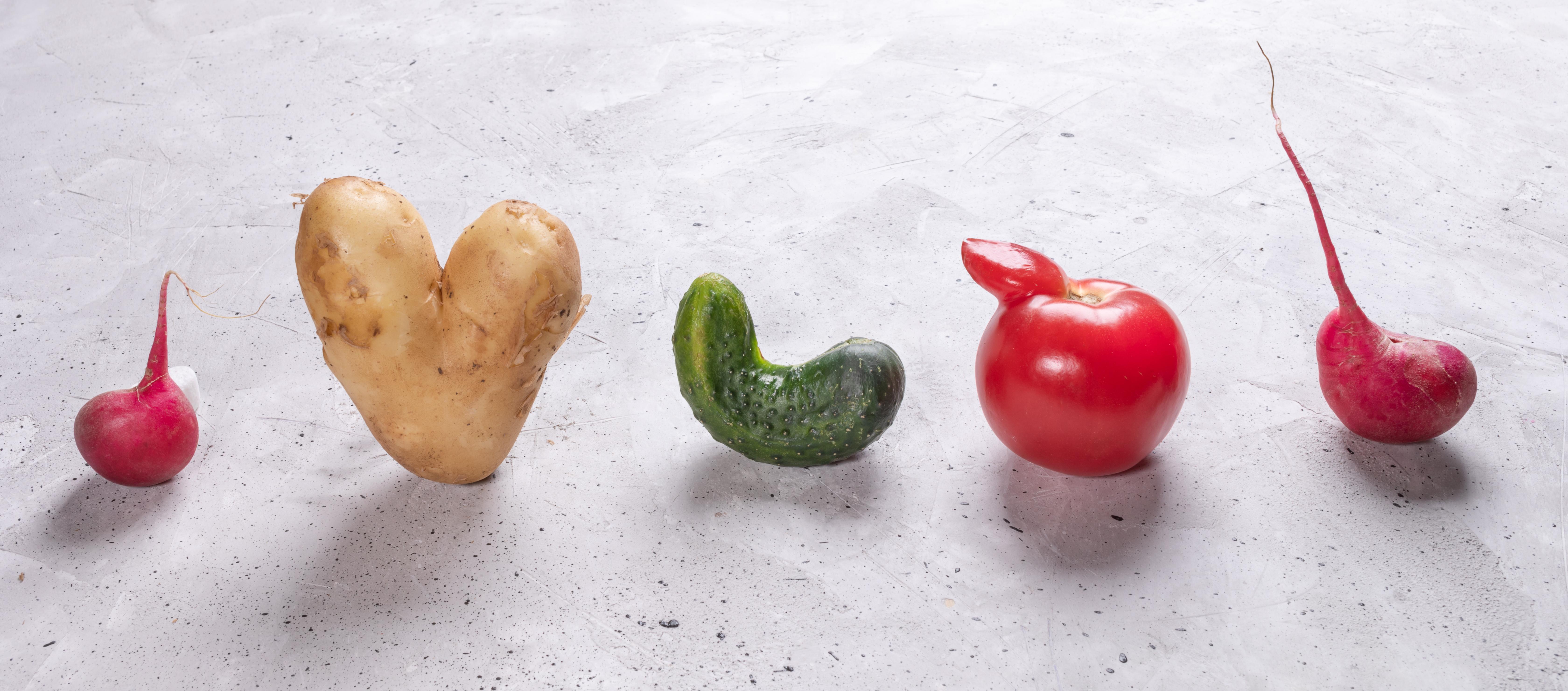Part One: The Secret Power of Foodwaste
Today we're talking about food waste - one of the biggest problems when it comes to the sustainability of our diet. Who doesn't know the problem: you buy something with a ravenous appetite, overestimate or simply buy too much and suddenly the yogurt is no longer edible. What's behind the phenomenon called 'food waste'? How can we fight the problem together? This, we would like to explain to you today.

As we learned in our first blog post, different foods have different CO₂ footprints. These footprints are made up of all the emissions that occur until the food lands on our plate, i.e. during production and throughout the entire transportation. Statistically speaking, however, the emissions during production are much more significant. When food is thrown away, these emissions also go to waste. Even worse is, that the resulting waste has to be disposed of and recycled. If the total worldwide amount of food waste would be a country, it would be the third-largest emitter of CO₂e. Right behind the USA and China. Imagine that!
Our global food systems are currently still so inefficient that around ⅓ of the world's food is thrown away. In Germany, that's about 18 million tons of food per year. During production, in the supermarket, or even at home loads of food are thrown out. Half of our food waste takes place in our homes. However, due to overproduction and quality standards (yes, a banana also has to be pretty to look at, and that's by standard), perfectly good food is already being disposed of throughout or after the production.
"1/3 of the world's food is thrown away. In Germany that's about 18 million tons of food per year."

But CO₂ is not the only big problem. So is water consumption. According to the World Bank, global agriculture uses 70% of freshwater. With the water that is lost in the production of food and also when food is thrown away and not returned to its natural cycle, 100 million Olympic swimming pools can be filled, according to the FAO. Incredible, isn't it? So water waste and food waste are directly related.
70% of Germans stated in 2016 that they regularly throw away food because it has spoiled. The reason given by 43% is that the food has exceeded its best-before date. We think, with a little fact check, we can counteract this.
"70% of Germans stated in 2016 that they regularly throw away food because it has spoiled"
What does the best before date tell us?
The best-before date on packaged food indicates when the food retains its taste when stored correctly. If the original sealed packaging has been stored correctly, food with an exceeded best-before date can often still be enjoyed and is not automatically spoiled. Organic dairy products last much longer, especially in jars. A forgotten, sealed cream in the refrigerator can wait 2-3 months until it is used. Fish, meat, and fresh mushrooms spoil super fast, so be careful to stick to the expiry date and examine the food when it is expired. In any case, do not consume expired fish, meat, or mushrooms raw and rather throw it away, if you are unsure.
What about mold?
When you see mold, it is primarily just the fruiting or inflorescence of the fungus. The actual mycelium is spread throughout the food. The more water food contains, the better the mycelium can spread. It also spreads very well in bread. This is why it is better to throw away the entire thing. If you see mold, this food should also be thrown away: Jam, meat, and sausages, sliced cheese, soft cheese, citrus fruits, fruits, and vegetables. If you have a moldy berry in your berry bowl, you should throw away all the berries around it as well, as they may already contain spores. It is different with apples, where the mycelium can also grow into the apple flesh, but the mold toxin only penetrates up to two centimeters further into the apple from the moldy area, so you can generously cut off the visible mold here and eat the rest. Cheeses and salami with existing mold cultures are protected from being infected by other toxic molds. In the case of hard cheeses, such as Parmesan, the moldy part can be cut out with a diameter of at least 2 cm.
Now you are probably wondering what solutions there are for this big mess. The following we would like to give you on your way:
1. Planning
We all have very busy daily lives, but we can still significantly reduce the amount of food we throw away. There is a very simple way to do this: planning. The first step is to observe yourself. What do you buy and how do you buy it? What quantities do you cook? Is there anything left over? Do you cook every day? How many meals do you eat each day? How much time do you want to spend in the kitchen? Once you have analyzed all of this, make a plan of what you want to eat in the next week. Better start small and increase the effort if necessary as you go.
2. Buying in bulks vs. buying more often
Here, too, planning is crucial. Just as how far away you live from the grocery store or market. If a car is needed, it makes sense to shop once a week for a 1 to 4-person household, because that saves CO₂. If everything is within walking distance, it makes sense to buy fresh produce at short notice. This reduces the risk of food being thrown away at the end of the week. Planning is therefore important so that you only buy what is necessary. This guarantees that everything is used up.
3. Leave the Economy Packs in the Supermarket
Sometimes the thrifty person in each of us gets her way. Big advantage packs can be cheaper at supermarkets, but if we can't eat it all, some of the big economy packs end up in the trash.
4. Storage is Key
Local fruit feels most comfortable in the refrigerator. Exotic fruit likes it better stored outside the fridge at room temperature. Vegetables are best placed in a dishtowel in the vegetable drawer at the bottom of the refrigerator. This will keep everything fresh for the maximum amount of time. Dry foods, such as pasta, rice, and flour can also last for years if stored properly. Store dry foods that don't need refrigeration in jars. This prevents external odors from getting into the food.
In the upcoming days, we will give you more tips & tricks about food waste in part two of 'The Secret Power of Foodwaste'. So stay tuned.
Are you already full of energy? Then start the 'Avoid Food Waste' challenge in the PLAN3T app today, save what you can, and track your success every Sunday. In May, you'll even get double Planet Coins for completed food challenges. We hope you have fun trying out the challenges. If you have ideas for future blog posts or more questions, feel free to write to us via hello@plan3t.one or contact us on Instagram, Facebook, or LinkedIn.
If we solve the food waste problem collectively and globally we have the potential to save 94.56 gigatons of CO₂ equivalents from 2020 to 2050. This makes food waste prevention the most effective way to save CO₂ worldwide.
What are we waiting for?
